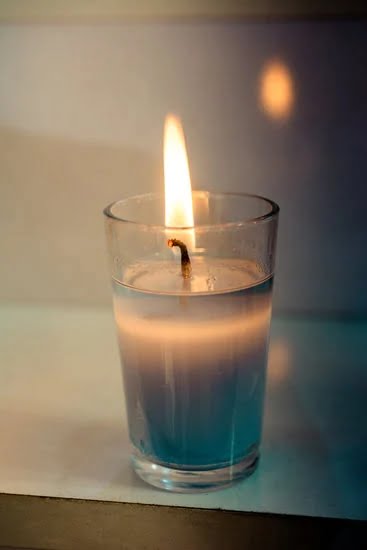Candle making is a delicate craft that requires precision and attention to detail. One of the crucial aspects of successful candle making is proper measurement of wax. In this article, we will explore the importance of accurately measuring wax for candle making and the potential consequences of incorrect measurements.
When it comes to candle making, getting the measurements right is essential for achieving even burning and a strong scent throw. Incorrect measurements can result in candles that burn unevenly, leaving behind wasted remnants of unmelted wax or causing tunnelling. Additionally, inaccurate measurements can lead to poor scent throw, where the desired fragrance fails to disperse effectively throughout the room.
Understanding wax density is key to accurate measurement in candle making. Different types of waxes have varying densities, which affects how much space they occupy when melted. By choosing the right density of wax for specific candle-making projects, you can ensure that your candles burn evenly and efficiently.
In the next sections of this article, we will delve deeper into the concept of wax density and provide tips on selecting the appropriate type of wax for your candles. We will also discuss essential tools for measuring wax accurately, including calibrated instruments such as digital scales and measuring cups. Through this comprehensive guide, you’ll gain the knowledge and skills needed to measure wax effectively and create perfect candles every time.
Understanding Wax Density
When it comes to candle making, proper measurement is crucial for achieving successful results. One of the key factors that affects accurate measurement is wax density. Understanding wax density and its impact on measuring wax for candles is essential for producing high-quality candles with even burning and optimal scent throw.
Different types of waxes have varying densities, which can affect how much wax you should use in your candle-making projects. For example, soy wax typically has a lower density compared to paraffin wax. This means that a given volume of soy wax may weigh less than the same volume of paraffin wax. It’s important to choose the right density of wax based on your specific candle-making project requirements.
To measure wax accurately, you’ll need some essential tools. A digital scale is highly recommended as it provides the most accurate measurements by weight. Make sure to use a scale that can handle the weight capacity required for your candle-making needs. Measuring cups or containers with clear markings can also be used for measuring by volume, but keep in mind that this method may not be as precise as weighing the wax.
When measuring by weight, follow these step-by-step instructions for accurate results:
- Set your digital scale on a flat surface and turn it on.
- Place a heat-resistant container or vessel on the scale and press “tare” or “zero” to reset the weight.
- Slowly pour the desired amount of wax into the container until you reach the target weight.
- Carefully remove any excess or overflowed wax from the container without disrupting the weight measurement.
- Record the weight measurement and proceed with your candle-making process.
Measuring by volume using measuring cups or containers can be an alternative method, especially if you don’t have access to a digital scale. However, it’s important to note that this method may not provide as precise measurements as weighing the wax. To improve accuracy when measuring by volume, ensure that you are using the same type and size of container for consistency.
Understanding wax density and using accurate measurement techniques will help you achieve consistent results in your candle-making endeavors. By mastering the art of wax measurement, you’ll be able to create candles with even burning, optimal scent throw, and a professional finish. So, take the time to familiarize yourself with the concept of wax density, invest in the necessary tools, and practice precise measurements for perfect candles every time.
Essential Tools for Measuring Wax
When it comes to measuring wax for candle making, having the right tools is essential for accuracy and consistency. This section will provide a detailed guide on the essential tools needed to measure wax accurately.
Digital Scale
One of the most important tools for measuring wax is a digital scale. A digital scale allows you to measure the exact weight of the wax, ensuring precise measurements for your candle-making projects.
Look for a scale that has a high level of sensitivity and can measure in grams or ounces, depending on your preference. It’s also helpful to choose a scale with a tare function, which allows you to zero out the weight of containers or other items used during the measurement process.
Measuring Cups
Measuring cups are another useful tool for measuring wax, especially when using the volume method. Look for heat-resistant glass or metal measuring cups that have clear markings for accurate measurements. It’s also beneficial to have multiple sizes of measuring cups on hand to accommodate different quantities of wax needed for various projects.
Wax Melter
A wax melter is an excellent tool for conveniently melting larger quantities of wax. Wax melters typically consist of a heated vessel and come in various forms such as electric melters or double boilers. They allow you to easily measure and melt your desired amount of wax without worrying about uneven heat distribution or burning the wax.
It is crucial to ensure that all your measuring tools are calibrated properly before each use. This can be done by using standardized weights or liquid volumes to check their accuracy. By using calibrated tools, you can confidently measure your wax knowing that your measurements will be precise and consistent.
Having these essential measurement tools in your candle-making toolkit will greatly contribute to achieving successful results with every candle you create.
Measuring by Weight
One of the most accurate methods for measuring wax in candle making is by weight. This method ensures precise measurements and consistent results, allowing for better control over the final outcome of your candles. Measuring by weight is especially crucial when working with different types of waxes or when precise quantities are required.
To measure wax by weight, you will need a digital scale capable of measuring small increments accurately. Here is a step-by-step guide on how to measure wax using a digital scale:
- Set up your digital scale: Place it on a flat and stable surface, ensuring that it is clean and free from any debris.
- Prepare your container: Place an empty container on the scale and reset the reading to zero. It is essential to weigh only the wax without including the weight of the container.
- Tare the scale: Add the desired amount of wax into the container until you reach your desired weight. To ensure accuracy, add small increments at a time and check the reading on the scale after each addition.
- Level off the wax: Once you have added enough wax to reach your desired weight, level off the surface with a spatula or knife for consistency in burning.
By measuring wax by weight, you can achieve consistent results with each batch of candles you make. This method allows you to precisely calculate fragrance load percentages or adjust quantities based on specific requirements.
| Benefits of Measuring by Weight | Key Steps for Measuring Wax by Weight |
|---|---|
| – Ensures accurate measurements | – Set up digital scale |
| – Achieves consistent results | – Prepare container |
| – Allows for precise calculations | – Tare the scale |
| – Enables adjustment based on specific requirements | – Level off the wax |
Measuring by Volume
When it comes to measuring wax for candle making, there are alternative methods that can be used besides measuring by weight. Measuring by volume is one of those methods, which involves using measuring cups or containers to determine the amount of wax needed. While this method may not be as precise as measuring by weight, it can still be useful in certain situations.
One important consideration when measuring by volume is the type of wax being used. Different waxes have varying densities, which means that a cupful of one type of wax may not weigh the same as a cupful of another type of wax. It’s crucial to be aware of this and adjust accordingly when using the volume method.
To improve accuracy when measuring by volume, there are a few tips and techniques that can be employed. First, it’s recommended to use a graduated container with clear markings for more precise measurements. Using a funnel can also help prevent spills and ensure that all the wax reaches the container without any wastage.
Another tip is to take note of any air pockets or gaps within the container when pouring the melted wax. These pockets can lead to inaccurate measurements if not properly filled in or accounted for. A gentle tap on the container or swirling motion can help eliminate any air bubbles and provide a more accurate volume measurement.
While measuring by volume may have its limitations and potential inaccuracies, it can still serve as a useful alternative when weight measurement is not possible or preferred. By utilizing these tips and techniques, candle makers can improve accuracy and achieve consistent results in their candle-making endeavors.
Calculating Wax Amounts
When it comes to making candles, calculating the right amount of wax is crucial for achieving desired results. Whether you are a beginner or an experienced candle maker, considering various factors will help you determine the appropriate amount of wax needed for your specific candle project. This section will discuss key factors to consider when calculating wax amounts and offer guidelines for estimating quantities based on these factors.
Container Size
One important factor to consider when calculating wax amounts is the size of the container in which the candle will be poured. The size of the container directly affects the amount of wax needed. A larger container will require more wax, while a smaller container will require less. It’s essential to measure the internal dimensions of your container accurately to calculate an accurate wax quantity.
Desired Candle Thickness
The thickness of your candle also plays a significant role in determining how much wax is needed. If you prefer a thick candle, you will need more wax compared to a thinner one. Consider whether you want a visually substantial candle or if you are looking for something more delicate. Keep in mind that thicker candles may take longer to burn due to their increased volume.
Fragrance Load
The fragrance load refers to the amount of fragrance oil or essential oil used in the candle. The scent throw, or how strong the fragrance is when burned, can impact how much wax should be used. Generally, fragrances can affect both the burn time and overall performance of the candle, so it’s important to follow recommended guidelines provided by fragrance manufacturers or conduct tests to achieve optimal results.
By taking into account these factors-container size, desired thickness, and fragrance load-you can better estimate how much wax is required for your specific candle-making project. Experimentation and experience will also help refine your calculations over time as you become more familiar with different containers, waxes, and project variations. Remember, precise measurement is key to successful candle making.
Troubleshooting Wax Measurements
When it comes to candle making, accurate wax measurements are crucial for achieving the desired results. However, even with the best intentions, mistakes can happen during the measuring process that can negatively impact the quality of your candles. In this section, we will explore some common mistakes made during wax measurements and provide solutions and workarounds to help you troubleshoot any issues.
One common mistake in wax measurements is over-measuring the wax. This can lead to an excess amount of wax in your candle which may result in uneven burning or a poor scent throw. To avoid over-measuring, it is important to carefully follow the instructions and formulas provided for calculating the amount of wax needed for your specific project. Additionally, using a digital scale can greatly reduce the chances of over-measuring by providing precise weight measurements.
On the other hand, under-measuring the wax can also be problematic. When you don’t have enough wax in your candle, it may not burn evenly or produce enough fragrance. One way to ensure accurate measurements is to double-check your calculations and formulas before starting your project. It is also helpful to use calibrated tools such as measuring cups or containers that are marked with accurate volume measurements.
To address these common mistakes, here are some solutions:
- Follow instructions and formulas accurately: Take the time to thoroughly read and understand the guidelines provided for measuring wax quantities.
- Use a digital scale: Invest in a reliable digital scale that provides precise weight measurements. This will help you avoid both over-measuring and under-measuring.
- Double-check calculations: Before pouring any wax into your candle vessel, double-check your calculations and formulas to ensure accuracy.
- Calibrate measuring tools: If using volume measurements, make sure your measuring cups or containers are properly calibrated for accurate results.
By being mindful of these common mistakes and implementing these solutions, you can troubleshoot any issues with wax measurements and ensure that your candle making process goes smoothly. With practice and attention to detail, you will be able to master the art of wax measurement and create perfect candles every time.
| Common Mistake | Solution |
|---|---|
| Over-measuring the wax | Follow instructions and formulas accurately, use a digital scale for precise measurements |
| Under-measuring the wax | Double-check calculations, calibrate measuring tools for volume measurements |
Conclusion
In conclusion, mastering the art of wax measurement is crucial for creating perfect candles. Accurate measurements ensure even burning and optimal scent throw, two essential elements of a successful candle. By understanding the concept of wax density and choosing the right wax for each project, candle makers can achieve consistent results.
Having the proper tools for measuring wax is also key. Digital scales, measuring cups, and wax melters are all essential instruments that can contribute to precise measurements. It is important to use calibrated tools to ensure accuracy and avoid any potential errors.
Measuring by weight is considered the most accurate method for determining wax amounts. Step-by-step instructions on how to measure wax using a digital scale can help candle makers achieve consistency in their creations. However, alternative methods such as measuring by volume can also be used with certain considerations to improve accuracy.
Calculating the amount of wax needed for a specific candle project requires considering various factors such as container size, desired thickness, and fragrance load. By following formulas or guidelines outlined in this article, candle makers can estimate the necessary quantities more effectively.
Overall, mastering the art of wax measurement empowers candle makers to create perfect candles consistently. This knowledge combined with experimentation and continued learning will allow crafters to refine their skills and create candles that burn evenly with delightful scents. With attention to detail and precision in measurement techniques, anyone can become a master candle maker.
Frequently Asked Questions
How do you calculate wax for candles?
To calculate the amount of wax needed for candles, you need to determine the wax-to-candle ratio, which is typically based on the specific type of candle you are making. The wax-to-candle ratio will provide instructions on the weight or volume of wax required to make a certain size candle.
For example, if the ratio suggests 1 pound of wax per 8-ounce candle, and you want to make multiple candles, multiply the ratio by the number of candles desired and adjust accordingly.
How many 8 oz candles will 10 lbs of wax make?
The number of 8-ounce candles that can be made from 10 pounds of wax depends on the specific wax-to-candle ratio being used. If we consider a common ratio that suggests using 1 pound of wax for an 8-ounce candle, we can calculate that with 10 pounds of wax, one can produce approximately 80 ounces (10 lbs x 16 oz/lb) of liquid wax.
Dividing this by the size of each candle (8 oz), it would be possible to make around ten 8-ounce candles from this amount of wax.
How many 16 oz candles will 10 lbs of wax make?
Similarly to question two, calculating how many 16-ounce candles can be made from 10 pounds of wax relies on the established ratio.
Assuming a ratio where each 16-ounce candle requires approximately 2 pounds (32 ounces) of liquid wax, with a total liquid wax yield from ten pounds equalling around one hundred sixty ounces (10 lbs x 16 oz/lb), it should theoretically allow for producing five to six sixteen-ounce candles with such an amount of wax.

Welcome to my candle making blog! In this blog, I will be sharing my tips and tricks for making candles. I will also be sharing some of my favorite recipes.



